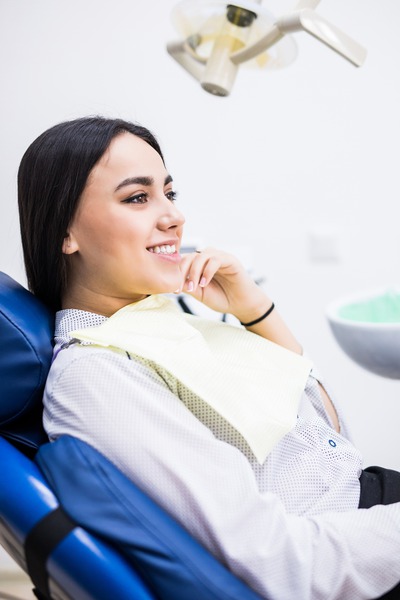Considering braces or Invisalign to improve your smile can raise plenty of questions about how they’ll affect your daily life. Two common concerns people have are related to eating and speaking. Will meals become a chore, and will your speech sound different? Let’s break down how these orthodontic treatments might impact these crucial aspects of your daily routine.
Choosing Between Braces and Invisalign
When choosing between braces and Invisalign, consider the impact on your lifestyle. Invisalign’s removability offers more freedom with eating but requires discipline in maintaining oral hygiene and wearing the aligners for the recommended time daily. Braces, while more restrictive in some areas, don’t require daily removal and cleaning, making them potentially easier for less disciplined users.
Impact on Eating and Speech
Wondering how braces or Invisalign will impact eating and speech is completely valid. Both treatments have their unique challenges and benefits, and here’s what you need to know.
Eating with Braces
Traditional metal braces can make eating a bit tricky at first. Initially, you may experience soreness, which can make chewing uncomfortable. It’s usually best to stick to soft foods like soup or mashed potatoes during this period. Once the soreness subsides, you can gradually reintroduce firmer foods, but some limitations remain. Avoid sticky or hard foods like popcorn, nuts, and certain candies to prevent damaging your braces.
Here are a few tips to make eating with braces easier:
-
Cut food into smaller pieces to make chewing easier.
-
Chew with your back teeth to avoid pressure on the braces.
-
Use wax to cover sharp edges that might irritate your mouth.
Eating with Invisalign
Invisalign aligners are removable, offering more flexibility when it comes to eating. Unlike braces, you can take them out during meals, allowing you to eat whatever you like without restrictions. However, you need to be diligent about cleaning your teeth and aligners before putting them back in to avoid staining and cavities.
Speaking with Braces
Braces can have a short-term impact on speech. You might initially notice slight changes in your speech, such as a lisp. This happens because the braces occupy space in your mouth and may catch your tongue as you speak. Fortunately, most people adjust within a few weeks as they become accustomed to the new hardware.
Speaking with Invisalign
Invisalign aligners cause fewer speech issues compared to braces. Since they’re custom-made to fit your teeth snugly, they have minimal impact on your speech. Some people may experience a slight lisp initially, but this usually resolves quickly as you get used to wearing the aligners.
Daily Maintenance for Braces
Keeping your braces clean is vital for maintaining oral health. Braces can trap food particles, making regular brushing and flossing essential. Special tools like interdental brushes and floss threaders can help you reach between the braces and wires.
Daily Maintenance for Invisalign
Invisalign aligners require consistent daily care. You should remove them before eating or drinking anything other than water and brush your teeth before putting them back in. Clean the aligners each day using gentle toothpaste and a soft toothbrush to ensure they stay clear and functional.
Choosing the right orthodontist can make a big difference in your treatment experience. If you’re looking for the best orthodontist in Mississauga, look for someone with excellent reviews and a commitment to patient care.
Regular Appointments and Adjustments
Both braces and Invisalign require regular checkups to monitor progress. With braces, these appointments often involve tightening wires and replacing bands. Invisalign follow-ups typically involve receiving new aligner trays every few weeks. Staying consistent with these appointments is crucial for achieving the best results in the shortest time possible.
Dealing with Discomfort
Braces can cause discomfort, particularly after adjustments. Over-the-counter pain relievers can help manage this, and orthodontic wax can cover any sharp areas irritating your mouth. In contrast, Invisalign wearers might experience minor discomfort when switching to a new set of aligners, which usually subsides within a day or two.
Progress Tracking
Both treatments offer ways to track your progress. Invisalign often provides a digital projection of your treatment plan, so you can see how your teeth will move over time. Braces’ progress is more visible with each visit, as the orthodontist makes adjustments based on your improvements.
Impact on Oral Hygiene
Braces can make maintaining oral hygiene more challenging but not impossible. You’ll need to brush and floss carefully around the brackets and wires to prevent plaque buildup and cavities. Specialty toothbrushes and tools are available to assist with this process.
Invisalign, on the other hand, allows for easier oral hygiene since you can remove the aligners to brush and floss normally. This advantage makes it simpler to maintain a healthy mouth throughout your treatment.
Social and Emotional Considerations
Wearing braces, especially for adults, can impact self-esteem due to their visible nature. However, many people find that the long-term benefits outweigh the temporary discomfort. Invisalign is less noticeable, and suited for anyone concerned about the aesthetic aspect of orthodontic treatment.
A supportive social circle can also make a significant difference in how you feel about wearing braces or Invisalign. Sharing your journey with friends and family can provide encouragement and motivation to stick with the treatment. Considering Invisalign in Oakville could be a great option. Invisalign provides a discreet way to improve your smile without the restrictions of traditional braces.
Cost and Insurance
The cost of braces and Invisalign varies, so check with your orthodontist about pricing and payment plans. Both options may be covered by dental insurance, but it’s essential to understand what’s included and what out-of-pocket expenses you might face.
Warranties and Guarantees
Some orthodontists offer warranties on their treatment plans, ensuring that you can receive follow-up care if needed. Make sure to discuss these options during your consultation to make an informed decision. Consulting an orthodontist in Brampton can provide personalized recommendations tailored to your specific needs. Local orthodontists can offer valuable insights into the most effective treatments available.
Post-Treatment Care
Wearing retainers post-treatment is essential to maintaining the results, regardless of whether you choose braces or Invisalign. Retainers prevent your teeth from shifting back to their original positions. Your orthodontist will guide you on how long to wear them and how to take care of these devices.
Potential Long-Term Effects
Quality orthodontic treatment offers many long-term benefits, including improved bite function, easier oral hygiene, and increased confidence. Addressing dental misalignments can also prevent potential issues related to chewing and speaking in the future.
Final Thoughts
The choice between braces and Invisalign depends on your lifestyle, preferences, and dental needs. Both options come with their unique sets of pros and cons related to eating and speech. Consulting a trusted orthodontist can help you make the best decision for your smile. Whichever route you choose, the long-term benefits will undoubtedly be worth the temporary adjustments in your daily routine.





